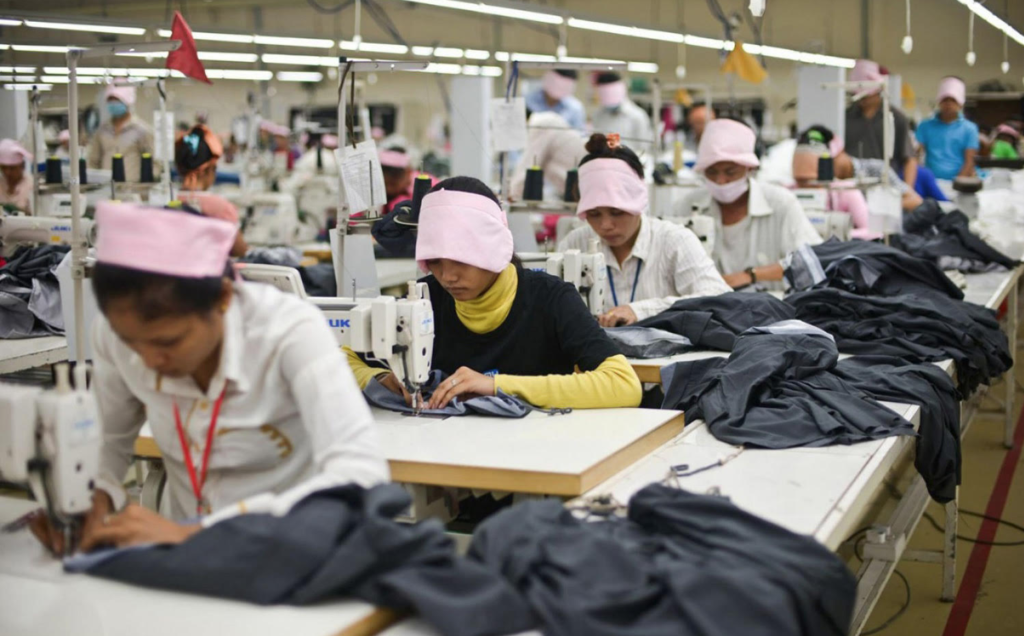UNSUSTAINABLE: Fast fashion is hurting people and the environment; stop making excuses for it!
By Rylan Christensen, Staff Writer
When was the last time you bought new clothes? Last weekend at the mall? Maybe over Christmas break? Likely, it was sometime in the last month. This is what fast fashion does. Twenty years ago, clothes shopping was occasional, and mainly occurred when the seasons changed. Now, there are brand new styles showing up at cheap, “trendy” stores every day. These styles will cease to be trendy again very soon, but we still buy them because they are popular for the time being. These items are often low quality, and mass produced in sweatshops, where employees work for less than half of the legal minimum wage (Los Angeles Times). Not only is this unethical and inhumane to those working to make these clothes, but the impact it has on the environment is astronomical.
Fashion has been a form of expression for many people starting in the 60s and 70s, but back then, runway styles were much different than street styles. It was in the early 2000s when low-cost fashion companies really took off, taking high-end styles from the runway and reproducing them at a lower quality so that any average person could afford them. Now, the most popular fast fashion companies include Forever 21, H&M, Cotton On, PacSun, and countless others. These companies all carry thousands of on-trend styles, with a limited quantity of items. This is so that people will buy the items while they are still trendy so they don’t miss out, and because of the short turnaround time, the clothes they just bought will already be going out of style and replaced with something new, restarting the cycle.
The fashion industry is responsible for 10% of annual carbon emissions, and is the second-largest consumer of water worldwide. All these resources and energy are used on making clothes, and still, 85% of these textiles end up in the landfill (Business Insider). These numbers are only growing with the rising popularity of fast fashion brands. Clearly, there is a demand for more sustainable fashion companies, which do exist, some of which being Reformation, Girlfriend Collective, and Everlane, but some of these brands are just too expensive for most people. Luckily, these companies aren’t the only option to help the environment. In the past few years, secondhand shopping has become very popular, such as buying clothing at thrift stores. This is even better for the environment than buying from sustainable brands. With secondhand products, there are no resources being used to create a new product, as well as less textile waste going to the landfill. This new trend has been nicknamed ‘thrifting,’ and its rise in popularity has not only encouraged more sustainable habits, but has allowed people to embrace their individuality with styles that won’t be seen anywhere else.
The other obvious issue with fast fashion is the means by which this clothing is made. In order to have such cheap prices and short turnaround time, companies rely on offshore manufacturing in sweatshops. In sweatshops, employees are forced to work under unethical conditions. They are overworked and underpaid, all so fast fashion companies can keep their prices low and profits high. This injustice was brought to light in 2013, when the Rana Plaza building in Bangladesh, which house five garment factories, or sweatshops, collapsed. Over a thousand workers were killed, and over two thousand injured. This incident was not isolated, and millions have died in sweatshops. Yet, people choose to ignore these issues and continue to buy from fast fashion brands out of convenience.
Most people who are on the internet today know how unacceptable fast fashion is, not only for the people who have no choice but to work in sweatshops, but also for the environment, and yet, they choose to look the other way and make excuses to shop at these stores anyways. It is time to end the excuses, because they are no longer valid. It is easy to shop ethically now, with more affordable sustainable brands emerging, as well as thrifting becoming easier. Not only are there secondhand stores in every city, but there are online thrift stores appearing, such as Thredup and Goodfair, as well as small, local businesses run on social media. Companies like these are making it easy to shop sustainably that there are no more excuses to keep supporting fast fashion companies. Make an effort, the next time you feel like going to a mall, visit your local thrift store instead.
